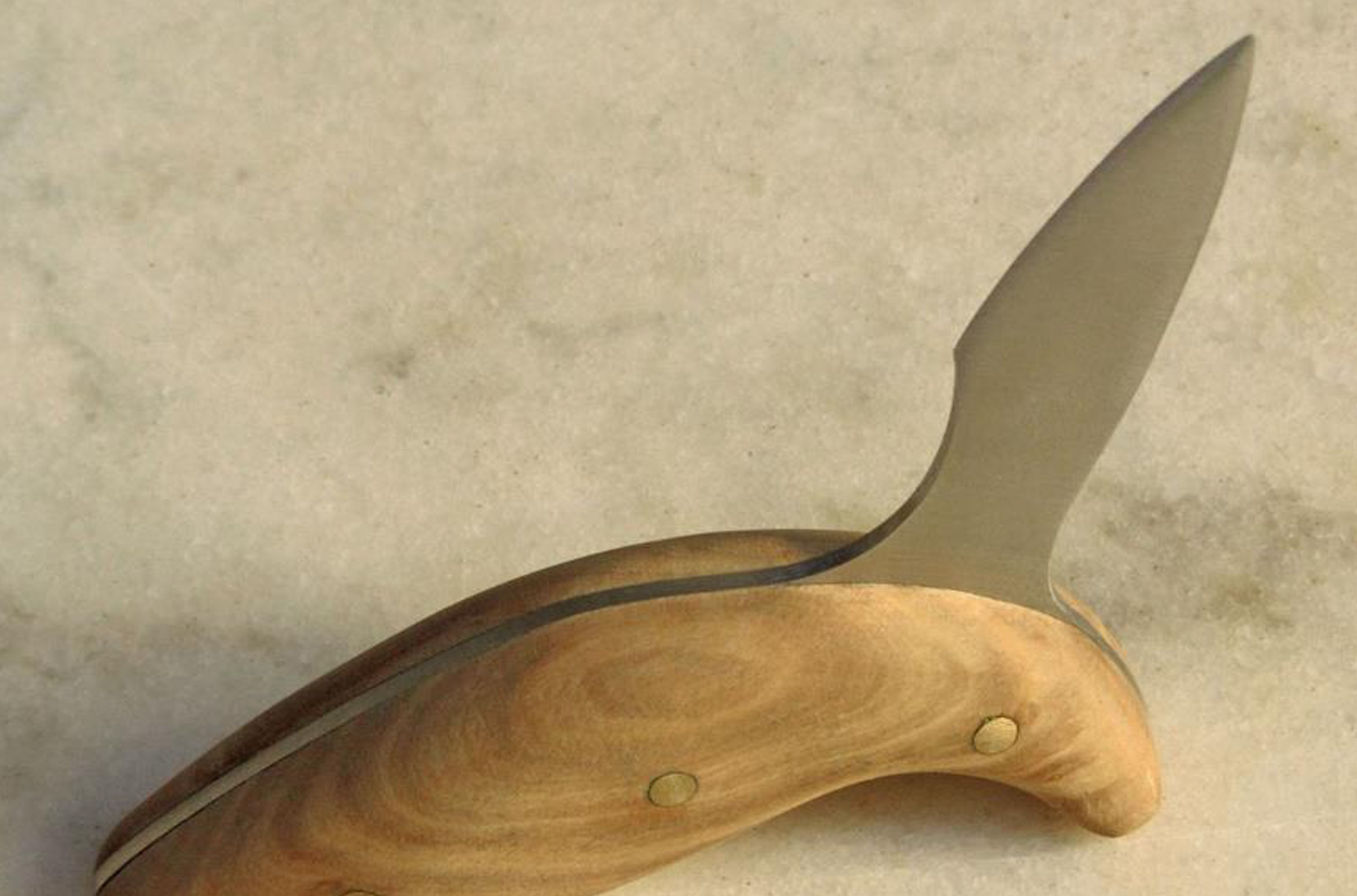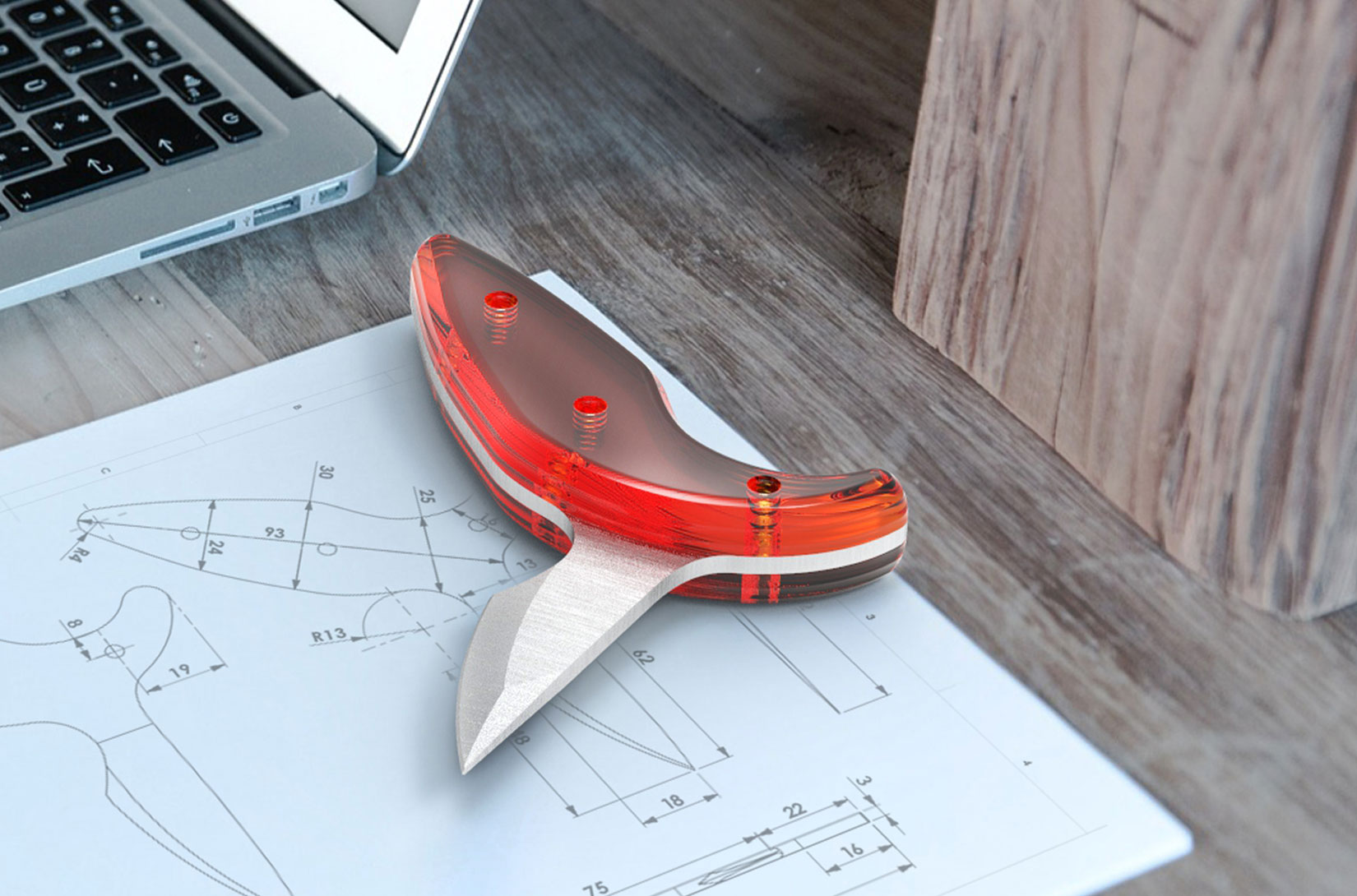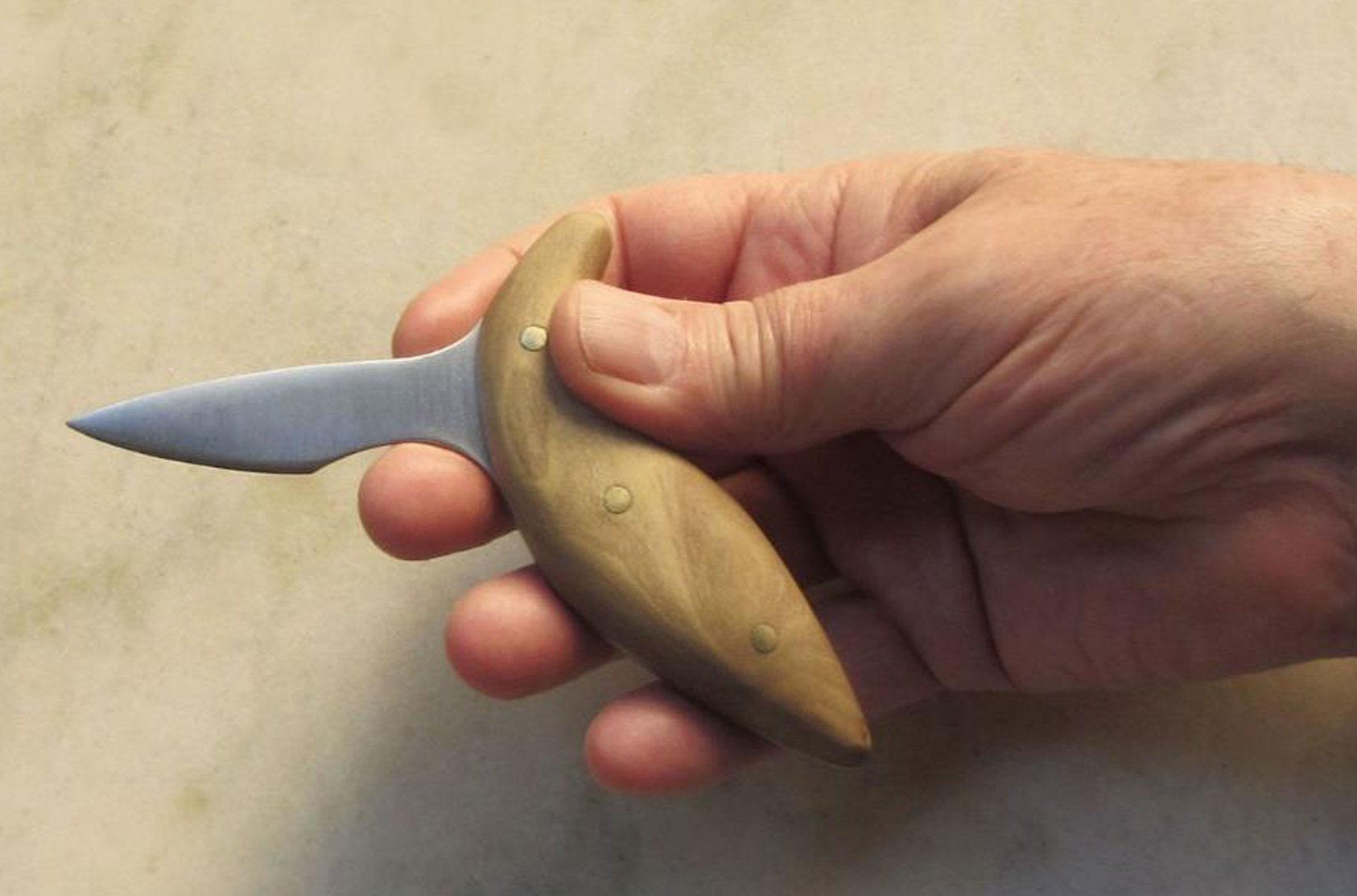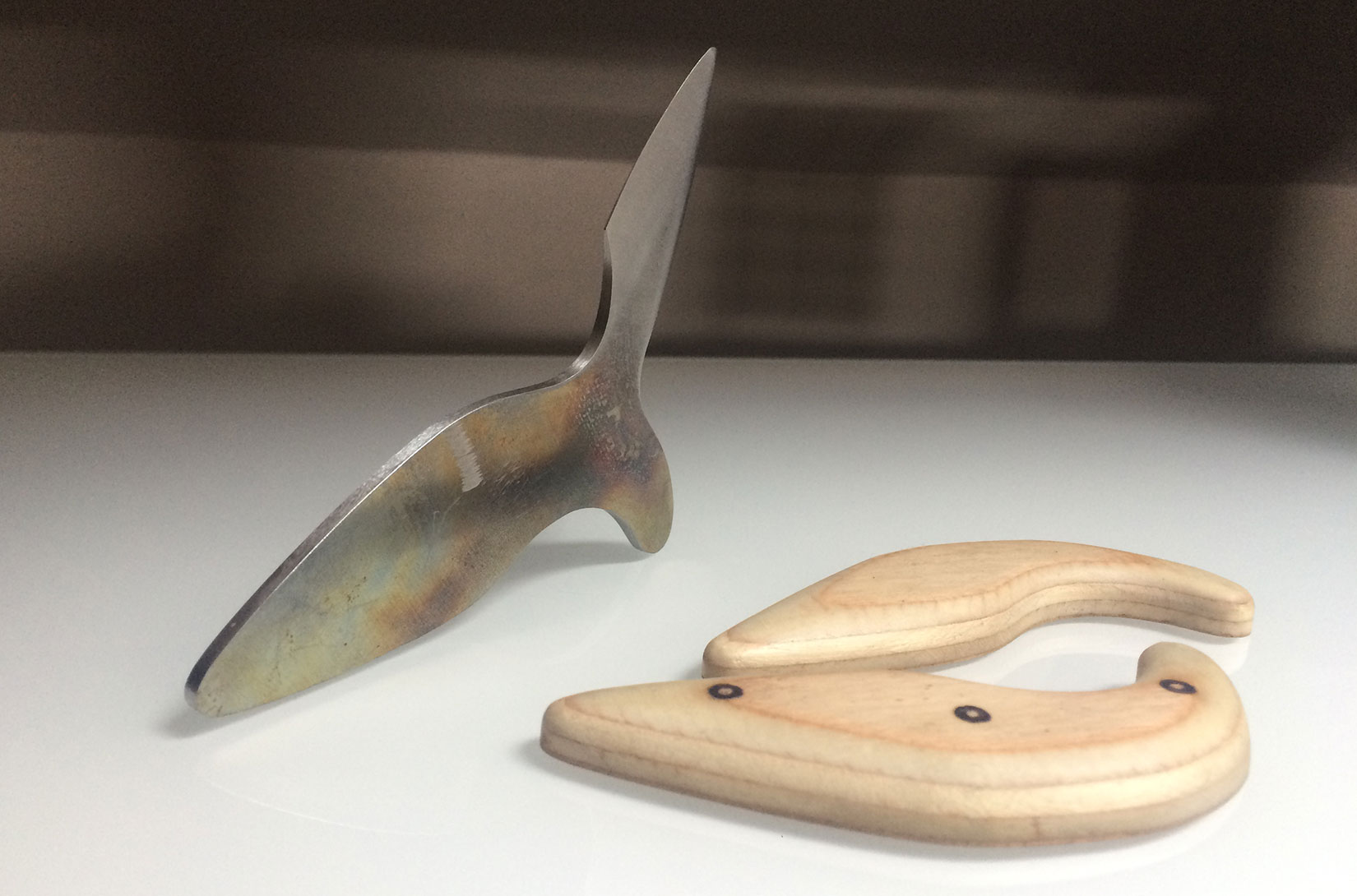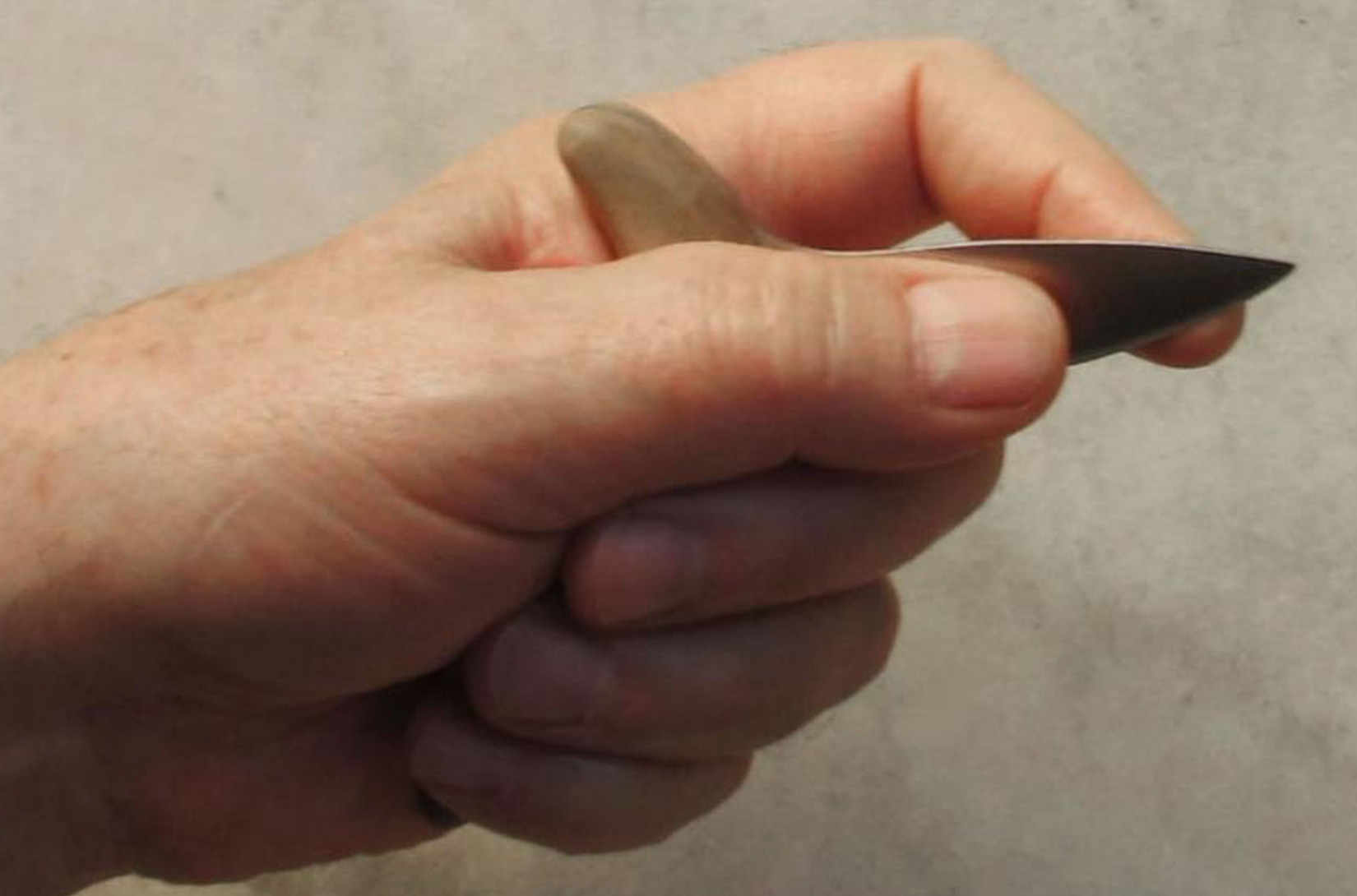BROUSSE
Designing an oyster knife
Services: product design, industrial design, 3D modeling, CAD, technical design, prototyping, object design, ergonomics
The design of this ergonomic oyster knife is the result of the observation that the strength of the wrist remains + strong when it is not bent. This knife has been conceived, designed and manufactured to open oysters quickly and easily.
The knife is characterized by the non-alignment of handle and blade. These form a closed angle, in a T-handle punch configuration, making it easier to grip for pushing. The action of an oyster knife is not primarily to cut, but to push. The cutting phase of the adductor muscle, which takes place only after the shell has been opened and the blade penetrated, is effortless. The blade has a sharp part for cutting the muscle and a non-sharp recessed part for locating the finger. The cutting edge is slightly rounded so as to tangentially scrape the oyster flesh adhering to the upper shell without attacking the pearly surface.
In the push position, thanks to the angle between handle and blade, the axis of the blade is in line with the forearm without having to bend the wrist. The gesture is natural and there is no lateral loss of power. Initial separation of the two shells is achieved by rotating the blade. The handle, at an angle to the blade, is easy to lever around the axis of rotation. The punching effect is optimized by the curved back of the handle, which follows the anatomy of the inside of the hand and provides the best support for the thrust.
Another special feature is the absence of a guard. This allows the fingers to approach the oyster directly at the start of opening, facilitating guiding, finding the commissure of the shells and checking the depth of the blade. It should be noted that scalers generally use knives without guards.

